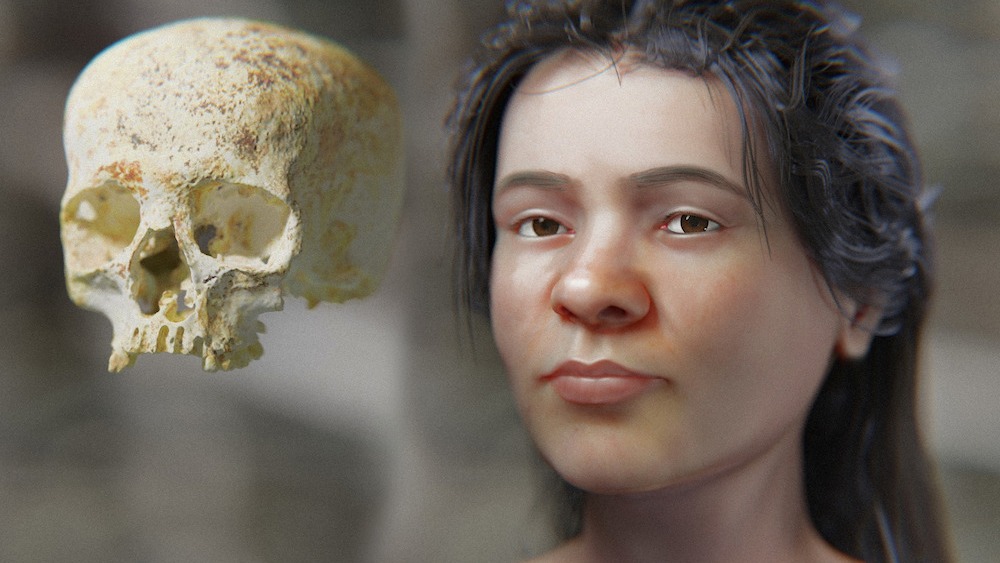See the face of 'Ava,' a Bronze Age woman who lived in Scotland 3,800 years ago
Researchers created a 3D image of a Bronze Age woman who was likely part of Europe's "Bell Beaker" culture.

In 1987, Scottish workers accidentally unearthed the burial of a Bronze Age woman during a road construction project. The stone, coffin-like tomb, called a cist, contained the woman's skeletal remains alongside grave goods, including a short-necked pottery beaker, a cow bone fragment and small pieces of flint.
The burial in Achavanich, in northern Scotland, came to be known as the Achavanich Beaker Burial. However, not much was known about the woman, whom archaeologists nicknamed "Ava," other than what they determined through anthropological analysis. She was between 18 and 25 years old when she died, and based on measurements of her tibia (shinbone), she was tall, standing approximately 5 feet, 7 inches (1.71 meters), according to a study published online June 22.
Based on her grave goods, it's possible that Ava was part of the Bronze Age "Bell Beaker" culture, which was common in Europe during this time period and known for its distinctively round pottery drinking vessels.
Now, a new image offers a glimpse of what this mystery woman might have looked like.
To make the three-dimensional facial approximation, researchers used existing computed tomography (CT) scans of Ava's roughly 3,800-year-old skull. However, since the cranium was missing a mandible, or lower jaw, the team used data culled from CT scans of living donor individuals to piece together the final image, according to the study.
Related: Face of 'elite' 7th-century girl buried in a bed with gold and jewels revealed after 1,300 years
"Thanks to anatomical, statistical and logical data, it was possible to reconstruct" her face even without the mandible, study author Cícero Moraes, a Brazilian graphics expert, told Live Science in an email. "I then set out to trace the profile of the face, which we do through a combination of soft tissue thickness markers, which inform the limits of the skin," he explained.
Get the world’s most fascinating discoveries delivered straight to your inbox.
From there, the team performed an "anatomical deformation" of the virtual donor "that is adjusted until the donor's skull converts to the skull of Ava," Moraes said, "causing the skin to follow the deformation, resulting in a face compatible with the approximated individual."
A 2016 analysis of Ava's likeness showed her with light skin, blond hair and blue eyes. But a separate facial approximation of Ava in 2018 analyzed her DNA and determined that she most likely had brown eyes and black hair and that "her skin [was] slightly darker than today's Scots'," the researchers wrote in the new study.
The researchers speculated, based on her height and facial features, that she may have been considered imposing during that time period.
Jennifer Nalewicki is former Live Science staff writer and Salt Lake City-based journalist whose work has been featured in The New York Times, Smithsonian Magazine, Scientific American, Popular Mechanics and more. She covers several science topics from planet Earth to paleontology and archaeology to health and culture. Prior to freelancing, Jennifer held an Editor role at Time Inc. Jennifer has a bachelor's degree in Journalism from The University of Texas at Austin.


